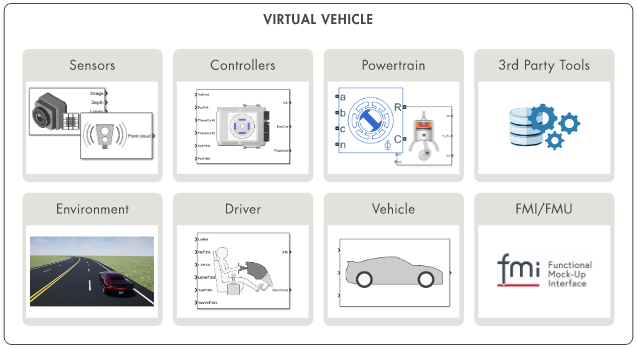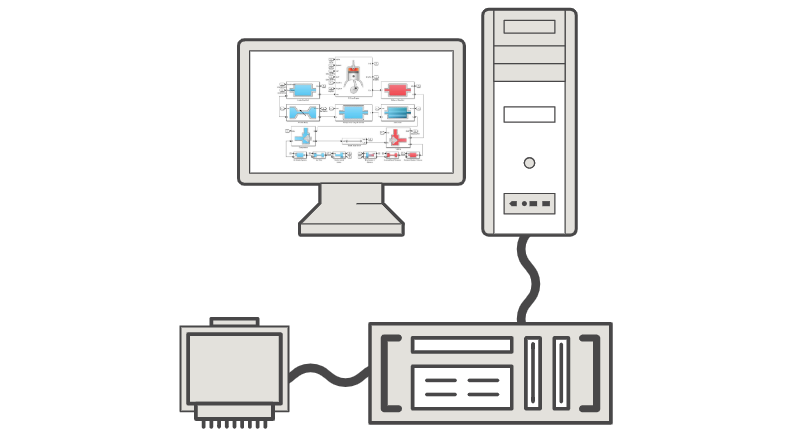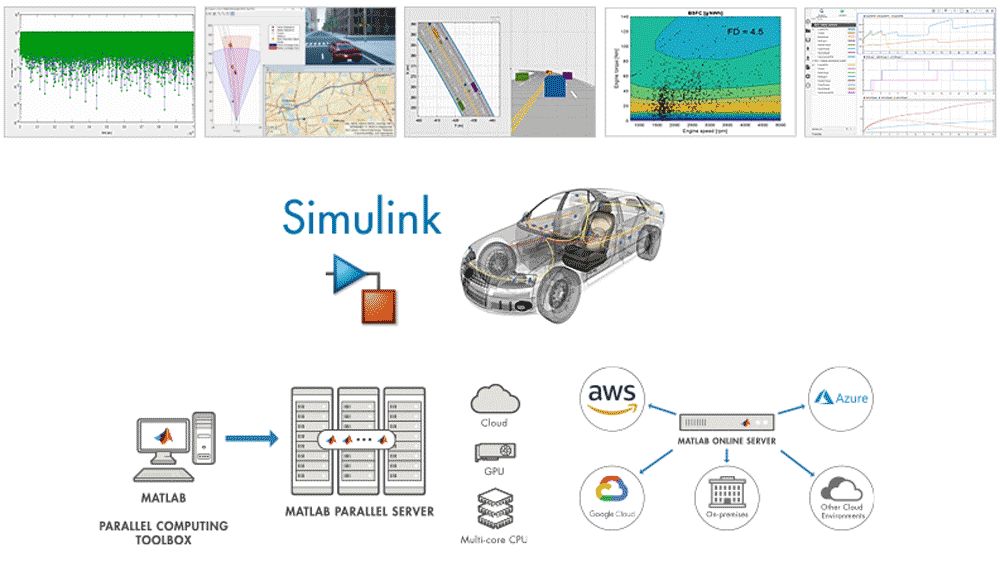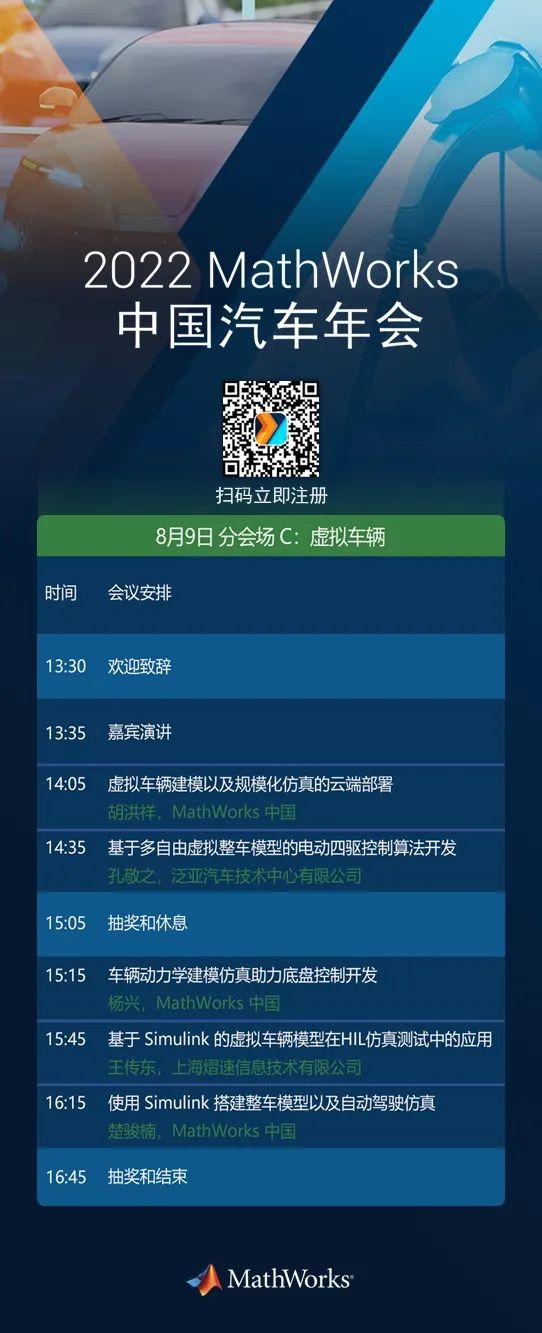
A virtual vehicle is a virtualization of the vehicle product development lifecycle, typically requiring system-level simulation of vehicle behavior. Virtual vehicle simulation allows automotive engineers to quickly gain insights into real-world behaviors, conduct virtual tests in various scenarios, and validate the functionality of embedded software. This approach to pre-development helps accelerate variant assessment, safely explore edge cases, and improve product quality.
To develop a virtual vehicle, you need to go through the following five steps:
-
-
Integrate embedded software
-
-
-
“Virtual vehicle simulation is essential for continuously assessing requirements, models, and software throughout the development lifecycle.”
—— Robert ter Waarbeek, Technical Expert at Ford
You can adjust the preset reference applications to match your vehicle design. These parameterized models cover powertrain and vehicle dynamics and can be applied to vehicle energy optimization, fuel economy analysis, thermal analysis, and component selection. You can further customize these models using components from electrical, mechanical, fluid, thermal, and multibody libraries.
For autonomous driving applications, you can combine various detailed sensor models, such as cameras, LiDAR, radar, and ultrasonic sensors.
Simulink® is an open integrated platform with over 100 connected partners, all providing dedicated integration interfaces for Simulink. You can leverage Simulink’s built-in Functional Mock-up Interface (FMI) support to integrate custom FMUs.

Integrate Embedded Software
Bring in your own control algorithms or use preset components and supervisory controllers to quickly assess the closed-loop performance of the entire vehicle.
To test controllers modeled in Simulink and Stateflow®, you can start with Model-in-the-Loop (MIL) simulation. You can directly connect these components to the virtual vehicle model for effective algorithm assessment in the early design phase.
In the later stages of development, you can use production-grade C/C++ code for Software-in-the-Loop (SIL) simulation. You can call or compile C code using Simulink’s built-in C/C++ interface and analyze the code coverage of the imported code.

Simulating with real parameterized scenarios and driving scenarios is a crucial part of the virtual development process, especially for autonomous driving: achieving the mandated billions of miles of driving to ensure safety is the only realistic way. With MATLAB®, Simulink, and various additional products, you can interactively create complex 3D road networks and markings, or generate road network areas by importing high-definition map data, then adding traffic participants and trajectories. To simulate cameras, radar, and LiDAR sensors, you can utilize sensor models running in the Unreal® environment for co-simulation with Simulink.
For electrified powertrain system development or other traditional vehicle applications, you can use a set of predefined driving operations or standard driving condition data to help you quickly assess vehicle performance. You can easily modify them or synthesize custom driving conditions based on fleet test data recorded in MATLAB.
Model-based design supports you in detecting and correcting system design flaws while modeling. You can step forward and backward in the simulation to gain insights into vehicle design and understand its unexpected behaviors.
When the simulation of the complete vehicle model aligns with expectations, optimize performance and run extensive simulation studies to explore design space or validate overall system behavior. You can distribute jobs for parallel execution on local multicore, GPU, cluster, or cloud, making it easy to scale your simulations.
Once you have the simulation results, you can view them using built-in visualization tools and flexible MATLAB data visualization capabilities. Additionally, you can automatically generate simulation reports according to your organization’s standards.
The beneficiaries of simulation are not just modeling experts; you can allow more teams to benefit from it. Using App Designer, you can create custom apps and package them as MATLAB Apps, standalone desktop apps, or web apps for distribution.
If you want to integrate your virtual vehicle simulation with real-world fleet test data, you can also choose to deploy the simulation to the cloud, leveraging the vast data stored there.
To verify hardware/software integration, you can use MathWorks®’ code generation products to deploy complete vehicle models for Hardware-in-the-Loop (HIL) testing.

◆ ◆ ◆ ◆
Learn how domestic automotive users use Simulink to build virtual vehicle simulations by registering now for the 2022 China Automotive Annual Conference Sub-venue C: Virtual Vehicles (August 9).

◆ ◆ ◆ ◆







